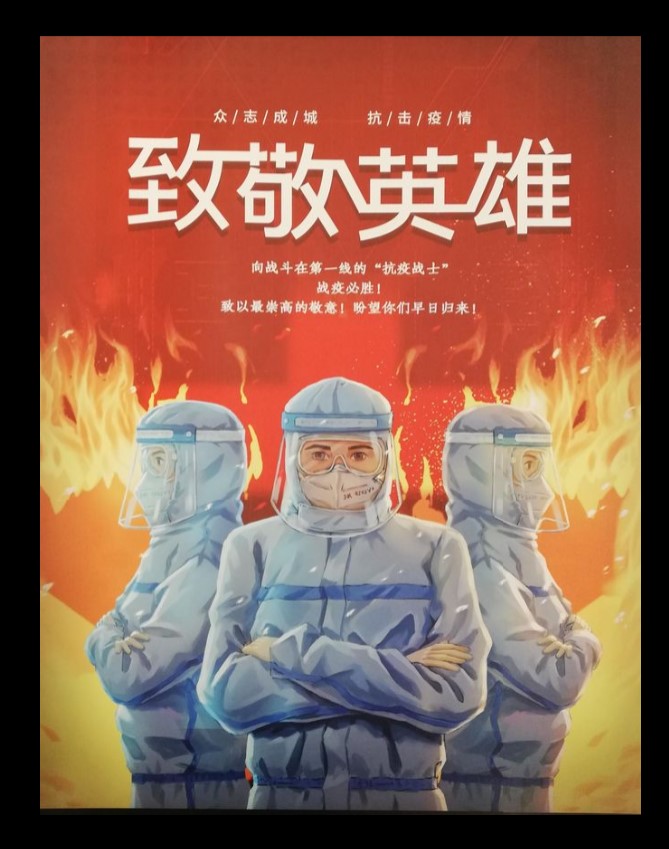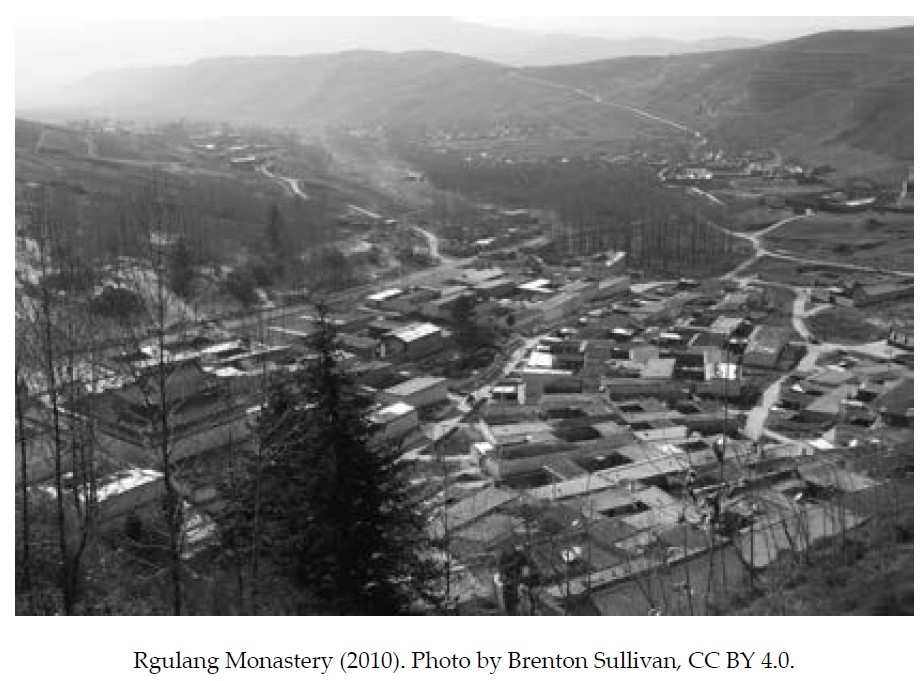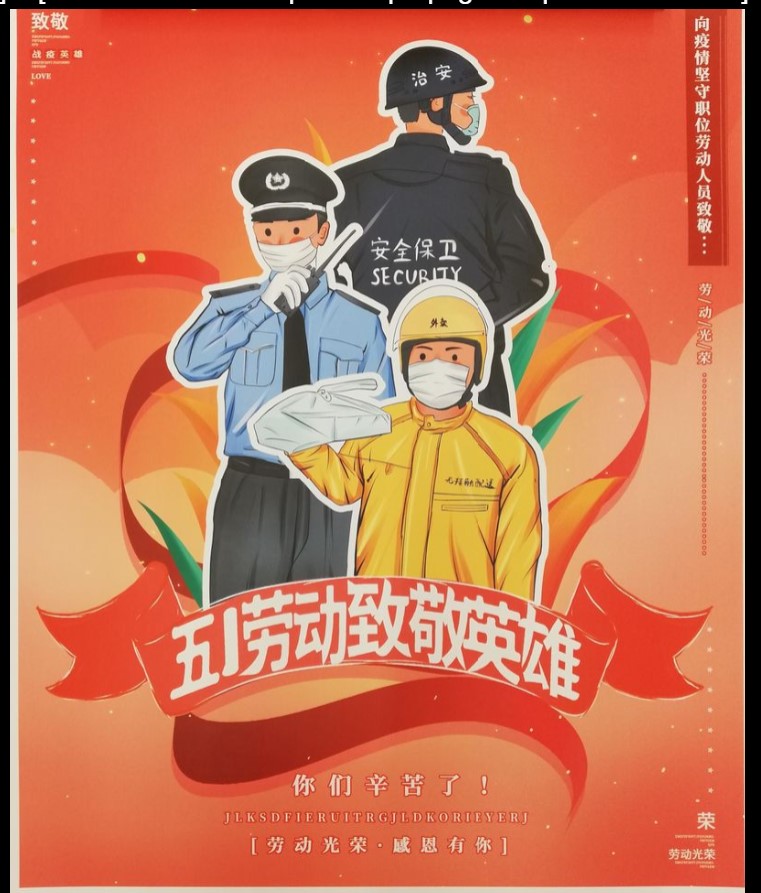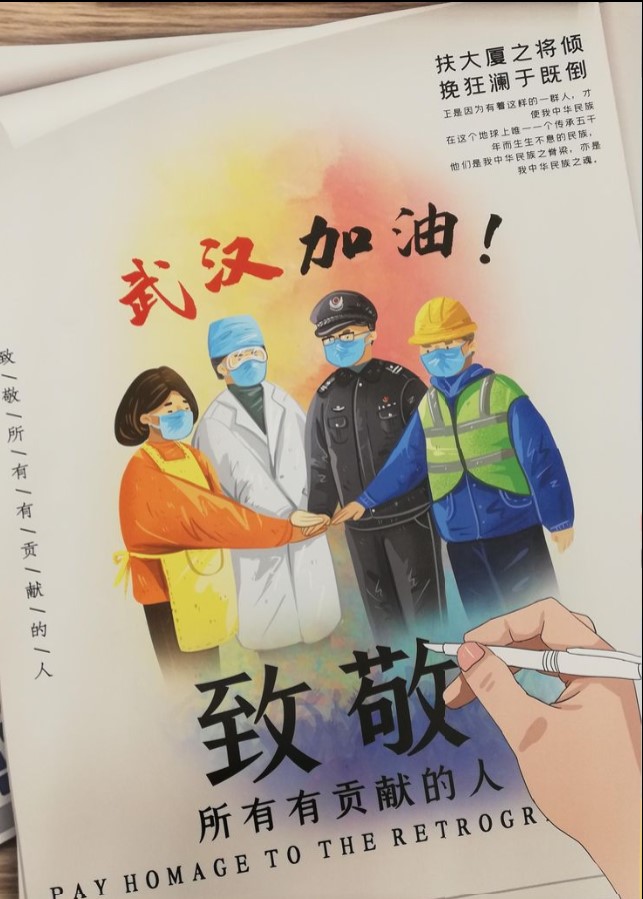Scary
Thanks to Adrian Zenz diligently digging into Chinese websites, we discovered in September 2020, a massive Chinese program to retrain and reform Tibetans en masse to propel them into the urban factory workforce.
Of all the sources Zenz delved into, the scariest was a story, with precise numbers, of the number of Tibetans in TAR who have been retrained and sent on to labour assignments elsewhere. Citing a TAR government website, Zenz tells us: “In the first 7 months of 2020, the TAR trained 543,000 rural surplus laborers, accomplishing 90.5% of its annual goal by July. Of these, 49,900 were transferred to other parts of the TAR, and 3,109 to other parts of China.”
That’s what set off the alarms, the talk of forced labour, and Tibet becoming like Xinjiang. Taken at face value, we should now be looking for the factories where Tibetans doing forced labour are making the sneakers, or woollen suits on sale in shopping malls worldwide.

Yet in the six months since, no OSINT sat cam search has revealed any new factories in TAR, still less big brand consumer goods factories for export. Maybe the forced labour factories are in Sichuan? So, what’s up? Do we need to look further?
Digging deeper isn’t just a pedantic insistence on dotting every i. When we take propaganda literally, we abandon our critical thinking, we succeed in scaring ourselves, thus enabling us to scare others. Is that useful?
FINDING THOSE SURPLUS LABOURERS
Let’s do a reality check. If we take the official number for seven months, that’s close to one million TAR Tibetan “surplus labourers” retrained in a year. According to the 2020 TAR Statistical Yearbook, in 2019, there were 21,400 unemployed people in the urban areas of TAR.[1] Total TAR population in 2019 was 3.506 million. A total of 2.6 million were in employment, nearly all the rest being children or the elderly. Not much sign of close to a million “surplus labourers.”
The number of rural TAR Tibetans employed in rural labour has continued to grow, in 2019 totalling 1.43 million.[2] That’s a 40 per cent increase over the past 20 years, in a time when across rural China, migration to city factory work has shrunk the rural labour force. Again, not much sign of all those “surplus labourers.” However, the rural workforce, in official statistics, includes not only those employed in pastoralism and farming, but also construction workers, 160,000 of them, who may be targets of vocational training.

What most alarmed Tibetan exiles and their supporters was the prospect of the retraining being done in military uniforms, with graduates then shipped off to distant parts, including beyond Tibet, accelerating their compulsory mobilisation into modernity, at a cost of fragmenting Tibetan families and society. Worst of all, the retrained could become a forced labour workforce, locked into factories. That prospect dominated the headlines.
The model is Xinjiang, where OSINT satellite camera tracking has indeed revealed large factories right next to internment camps.
POVERTY PROGRAMS MASKING COERCION?
If official media are to be believed, China has succeeded several times over in remaking Tibet in China’s image. Here is another recent example, another story dripping with precise statistics, on poverty alleviation in a remote area of Amdo, in northern Tibet: “Moergou Village is located in the Naoshan area. The four natural societies are located in four deep gullies. Before poverty alleviation, there was no collective economy in the village. The poverty incidence rate reached 37% and the per capita disposable income was 2,700 yuan. In the past five years, a total of 4.51 million yuan has been arranged for special guidance funds for cultural tourism development, and 3 million yuan has been obtained for tourism poverty alleviation funds of the Provincial Poverty Alleviation Bureau for the construction of tourist infrastructure such as Moergou Village Tourist Service Centre, self-driving camp toilets, and tourist toilets. After several years of construction, the former remote mountain village has now become a rural tourist attraction integrating pastoral customs, ecological leisure, folk culture, and smart tourism. The peasants who originally depended on the sky for food became the small owners of the farmyard, and the poor households who could not be self-sufficient in their harvest opened a small shop to get rich. Since the opening of the rural tourist attractions in Moergou Village in 2020, it has received 150,000 tourists and 125 tourism practitioners, of which the poor accounted for 60%, and the village’s collective economic income has risen from zero to 1.39 million yuan.”

Despite the welter of numbers, this is nonsense. Gonlung county (Huzhu in Chinese) is only 45kms northeast of the boom city of Xining, Qinghai’s capital, but it does have some rugged terrain where the main river of northern Tibet cuts through the mountains, and poor villages on upper slopes. Nominally this county is for the Tu minority nationality,[3] Tibetans are not so many, but you would take a while to realise this, as the Tu embraced Tibetan Buddhism. The many Nyingma and Gelug monasteries produced famous scholars, Gyurme Dorje tells us.[4] Take a look at grainy video shot 25 years ago.
The main outcome of the village’s designation as poor is millions of yuan spent on toilets, resulting in 150,000 tourist visits? The villagers used to have no income but now plenty? Now 150,000 tourists have come, not only for the toilets, but for “pastoral customs, ecological leisure and folk culture”?
PASSIVELY DEPENDING ON THE SKY
What stands out in such reporting is the arrogant racism about “peasants who originally depended on the sky for food”, a trope commonly applied to Tibetan pastoralists, as if they are passive, helpless, fatalistically dependent on the whims of nature. Nothing new here; like the derogatory language Zenz reproduces, such metaphors have been on Chinese lips for many decades.
Salvation by becoming objects of the tourist gaze is a favourite, even the report is so vague about what those 150,000 tourists came to gaze at. This story, of March 2021, claims tourists flocking to a remote mountain village in a time of pandemic. An earlier story, in June 2020, in the same Qinghai Scitech Weekly, tells us the pandemic scared tourists away, even though local women had much embroidery for sale. However, the poor Tu learned to go online, and their embroidery sold. Again, the patronising language is revealing: “A few days ago, county officials faced the camera of their mobile phones for the first time, interacted with “net celebrities”, and set foot on the “cloud” webcast to bring goods.”
Having hired Han influencers as brokers, who get a cut of every sale, distant Han customers on the lookout for new products that confirm their individual taste, were persuaded to buy. That’s China’s benevolence.
Through Tibetan eyes “depending on the sky/heaven for food” 原本靠天吃饭的 Yuánběn kào tiān chīfàn is not at all passive, fatalistic, defeatist or lacking in human will. It is skilful adaptation to highly variable and unpredictable climate and seasons, in a land where snowstorms can occur even in summer, seemingly out of nowhere in a clear sky.
It is Han China’s foundational assumption that the peasant who does not impose human will on the land, by ploughing and sowing, will starve. Human will is likewise the essence of revolution, and the utopian promise of a new heaven on earth. Human will, Mao often said, can remove mountains. On the vast grasslands, according to Han perspective, civilisation begins with penning animals, cutting fodder, bringing it to the animals. The uncivilised depend on the sky for food, which makes them little different to their animals.

HOW TO LIVE OFF UNCERTAINTY
China has now had seven decades of actively governing the grasslands of Tibet, longer in Inner Mongolia, but has never learned to see through local eyes that flexible adaptation to uncertainty is skilful.
Nor has modern China, despite extending its reach deep into the grasslands, ever understood how differently Tibetans look upon the land, its natural cycles, and the human need for nutrition. Far from seeing predicament, problem and the necessity of mastery, Tibetans have seen themselves as gatherers of what grows seasonally as and when favourable causes and conditions arise. The primary responsibility of the human is to relax, allow problems to dissipate of their own accord, and be willing to move on to avert overgrazing. Flexibility and mobility are the keys to gathering the gift of animals which convert grass and sunlight into wool and dairy, skins and muscle, all that is needed for subsistence, sustenance, shelter and trade.
In classic Tibetan thinking the transformative journey within, to discover the nature of mind and of all phenomena, requires from the start the cultivation of equanimity, an acceptance of things as they arise, and as they of their own dynamic change. Equanimity is a relaxation of the fixation on problem and solution, a recognition that clouds do gather and obscure the sun, yet they pass of their own accord. Without equanimity the mind remains cluttered by wrestling with rights and wrongs, problems and solutions, never spacious enough to experience the nature of mind.
When a Tibetan nomad walks his yak herd round a sacred site, in the snow, this could be seen as utterly useless, totally impractical, completely irrelevant to how the real world works. It could also be seen as a cheerful nomad clearing his mind, a training in equanimity and the qualities which, in the Tibetan system, follow from the development of equanimity: abiding joy, love and compassion for all.
China’s ongoing derogatory depiction of Tibetans “depending on the sky for food” is ignorant, racist and contemptuous. It is this contempt that is the biggest price Tibetans must pay for living under alien rule. Official China routinely calls Tibetans lazy, backward, sunk in darkness, weak, unable to compete, in need of modern industrial discipline, all arising from contempt for “depending on heaven/the sky for food.”

China under Xi prides itself on its mastery, on extending its reach in all directions, in solving all problems, rather than standing back to let problems dissipate of their own accord. A China fixated on mastery is full of contradictions, problematics, solutions, allocations, numbers, targets, quotas, directives and commands. Local governments are under intense pressure to fulfil quotas and report up the line their success, in a system which rewards cadres for meeting targets and penalises them harshly if local discontent spills into public life.
The TAR provincial government report claiming to have trained 543,000 Tibetan “surplus labourers” in seven months, is a classic example of reporting up the chain of command what leaders want to hear, no matter how impossible.
Adrian Zenz, in bringing us this absurdity, dug deep into Chinese sources, in this case the official website of the TAR government. We need to dig deeper, to contextualise such claims. We need to understand Xi Jinping is not omnipotent, and has reason to frequently denounce “formalism”, the term for pretending to comply with commands from above while in practice ignoring them.
REACH OF THE STATE EXCEEDS ITS GRASP
Digging further, we discover the dangers of taking official media and their boastful statistics literally. We turn to those who have spent a lifetime immersed in the un/governability of China to guide us. Prof Minxin Pei is a reliable guide.
Wrestling with claims in official media that intensive surveillance by China’s grid management system, pioneered in Tibet, is now in place all over China, Minxin Pei reminds us: “The idea behind this multi-layered, sophisticated, and integrated information system is to provide real-time awareness of events that potentially may endanger public safety, disrupt people’s lives, or undermine stability. Another critical component of grid management is its supposed integration with the various types of surveillance equipment installed in each grid.
“Official claims must be treated sceptically because they tell us little about the effectiveness of grid management in achieving its stated objectives. In all likelihood, provincial authorities provided these numbers to show to the central CCP leadership that at least on paper they had carried out its policy on implementing grid management. Despite the impressive titles given to those staffing the grids, most of them appear to be part-timers, volunteers, or government employees with other full-time responsibilities. Perhaps the only full-time personnel dedicated to performing the responsibilities assigned to each grid is the grid attendant. But in many jurisdictions, lack of funding forces local officials to label people already employed by the neighbourhood committees as “grid attendants.” At the moment, despite claims made by provincial and local governments about implementation of the system, available evidence indicates that this remains a work in progress and the Chinese party-state will confront enormous challenges in fulfilling its goal of dividing Chinese society into more than one million small grids patrolled by full-time attendants and equipped with hi-tech information and surveillance technologies.

“The other flaw is the excessive paperwork, or busy work, they must perform. Since grid management is designed to gather information on incidents and potential hazards in a given neighbourhood, evaluation of the performance of grid attendants unavoidably tilts toward the amount of information they generate. As a result, grid attendants engage in a lot of busy work (completing paperwork and posting on social media) that has no impact on improving the delivery of services. In the countryside, where the government delivers far fewer services, grid attendants are under pressure to report incidents or issues requiring attention because that is part of their evaluation metrics. They sometimes report false information or trivial issues to meet their quotas. Our study shows that 90 percent of the issues or incidents reported by grid attendants in the countryside are trivial or useless. What appears to have happened so far with respect to implementation of grid management is a rather familiar Chinese story in which the central leadership issues an ambitious, if not impractical, order but provides few resources for local governments to execute it. As a result, local authorities are forced to improvise, appearing, on the one hand, that they are faithfully carrying out Beijing’s edict and, on the other, avoiding extra expenditures.”
If Minxin Pei is right, a surveillance system at the core of China’s securitisation of everything, is clogged with busywork, trivia, falsehoods, excessive paperwork, going through the motions, in other words formalism. If he is right -and he has an impressive record of reading China well and very closely- then what applies to the grid management program applies also to the labour mobilisation program in Tibet.
How can Prof Pei, based in California, know all this? He dives so deep, he comes up with an academic research report into grid management in remote rural areas, published in 2020, that reveals: “The shortcoming of grid management is that bureaucratic governance and process-based operation are contrary to the logic of rural affairs governance, which brings formalization of affairs governance and involution of grassroots governance.”[5]
SOAKED IN RACISM
Diving that deep is what we need to do, firstly to test the reliability of boastful claims found all over official media. Secondly, we need to know what impacts official policy have on Tibetan communities. If we actually want to help Tibetans deal with daily pressures, constraints, Han racism and contempt, we need to see how China’s alien rule operates on the ground in Tibet. If we only collect high level official announcements, and assume an omnipotent Chinese leadership just snaps its fingers, and everyone does as instructed, we are stopping short of hitting the ground.
If we limit ourselves to spreading alarm, because it sparks legislators in the West to don their white hats, we do stand up to China.

Yet that doesn’t actually do much to change anything for Tibetans in Tibet. But is there anything folks outside Tibet can actually do that does help? Not a question often asked.
Focussing on the deeply entrenched racism of Chinese perceptions of the Tibetans is helpful, for a few reasons.
First, Han China is completely oblivious to its racism. Not only is it not acknowledged, it is nowhere discussed, nowhere even imagined as a possibility. In urban China there is active debate about racism towards blacks, sparked by the Black Lives Matter protests sweeping the US, and by several incidents in China where Africans were attacked. These days, it is not hard to find educated urban Chinese who say: “I like American black culture, but I don’t like blacks, and I recognise this is a contradiction.” Yet even such hip, woke awareness does not extend to Tibetans or Uighurs. It is simply inconceivable that the entire depiction of these recalcitrant minorities is shot through with condescending, patronising, stigmatising racist metaphors. There is no debate at all.
There has been a long history of portraying Tibetans as backward, timeless, outside of history, primitive and to blame for their poverty. This is not new. A foundational racist assumption is that Tibet is unnaturally and unhealthily cold; the air is dangerously thin, to visit Tibet risks breathing your last, no-one would choose to live in Tibet if they had choice. China benevolently offers Tibetans choice, yet Tibetans ungratefully refuse modernity with Chinese characteristics.
Yet China is quick to allege racism as the driver of attitudes to China, especially among the Anglo nations most willing to call out bad behaviour. So naming racism for what it is names the primary pressure Tibetans experience daily. It explains why they are understood as a security risk and little else, why they are not believed, excluded from the public sphere, criminalised when they try to speak for themselves.

HAMSTRUNG BY FEAR
Second, Han racism is so pervasive it limits the extent of labour mobilisation and the ethnic mingling that official China promotes. To understand the depth of racism across Han China is to understand how constrained the party-state is, in implementing its assimilationist plans to sprinkle Uighurs and Tibetans all over China. This is a way of gauging whether party-state plans can take effect.
There are many reports of officials in Xinjiang assembling trainloads of retrained Uighurs sent off to distant factory work in inland provinces; only to have officials at the destinations turn them away, for fear of having the feared Uighurs on their patch. Far from shipping Uighurs en masse into inland and coastal China, the actual number transhipped is at most 76,000 and they were all promised the right to return to their Xinjiang families, a right they took up during the pandemic, to such an extent that when the BBC sent reporters to several factories purported to house Uighurs in their factory dorms, none remained, all had gone to their distant home.
China, at the highest level, is prisoner of its own racism, unable to impose its will because at the lowest level, officials know their primary responsibility is to prevent and suppress “incidents” of popular protest. Nothing is more likely to spark “incidents” than the presence of Uighurs in an overwhelmingly Han factory town, and they are hard to control. The safest strategy is to refuse to let the Uighurs detrain, or to find any excuse to send them back.
China imprisoned itself by incessantly accusing the Uighurs, collectively, of being terrorists. China’s official media, after Tibetan protests in 2008, spent years labelling Tibetans collectively as “looting, smashing, burning, killing.”
When we cite official media claiming to have retrained half a million TAR Tibetans in seven months, and take it literally, it looks like China is omnipotent, and can move Tibetans around China like pawns on a chessboard. When we dig deeper, we discover China’s leaders stoked the ultranationalism that now imprisons them.
A TIBETAN TAKE ON LABOUR MOBILISATION
Third, Tibetans aren’t a primitive tribe mired in ignorance, even though China relentlessly depicts them so. Far from being unaware of modernity, Tibetans offer each other sophisticated critiques of the costs of being mobilised, or seduced, into urban acceleration.
Why do humans have hands? a contemporary singer asks. Holding a smart phone in your hands only restricts the countless works the hands can do.
“The visual faculties are consumed by the phone” Dakpo’s Dog sings . Tibetan culture responds to the addictive shrinking of the world to a phone screen, by producing videos that will be accessed on phone screens. Tibetans critique the flashy appeals of holding the speeding world in your hands, by using the tools of hypermodernity. That’s a hallmark of the indestructible, immutable vajrayana, the tantric take on reality. The lyrics and music were composed by a Tibetan who calls himself The Immutable.
Ubercool young Tibetans sing to us on our handhelds, Tibetan first principles being their starting point. Maybe we should all be listening to them.
”The function of both hands is vanquished by the phone
The visual faculties are consumed by the phone
When the old and young have phones in their hands
They need neither parents nor their friends
It’s the phone when on the road and it’s the phone at home
Neither listening to good advice nor doing meaningful work
Holding the phone in your hands, don’t waste your time
When your youth has gone, the phone won’t have done you any good.”
There are more smart phones in Tibet than people, which China takes as proof that it has delivered that most important of human rights: the right to development. Tibetans ought to be grateful.
These young Tibetans beg to differ. Wangmo Dechen sings:
“Don’t hold your phone in your hand
Please put your phone down now
It is not a protective mala
The blurry worldwide web
Is poison to distort the vision
“Now if you don’t put the phone down
Your eyes are about to go blind
Your neck is about to become crooked
Your daily activity is disrupted
Your dreams at night are disrupted
“Though sending messages may be efficient
Between parents and siblings
Between couples and partners
Between the kin and relatives
It will further distance the affection.”
[1] Statistical Yearbook Tibet Autonomous Region 2020, table 3-22
[2] Statistical Yearbook Tibet Autonomous Region 2020, table 8-1
[3] Li Dechun, Long Narrative Songs from the Mongghul of Northeast Tibet, https://www.openbookpublishers.com/product/638
Schram, Louis M. J. 1954. The Monguors of the Kansu-Tibetan Frontier. Their Origin, History, and Social Organization. Transactions of the American Philosophical Society 44.1:1–138.
[4] Gyurme Dorje, Tibet Handbook, 4th edition, Footprint Books, 2009, 696
[5] Liu Rui, 刘锐,”The Vision of Rural Grid Management,” “农村网格化管理神视,” Guizhou Social Sciences,贵州社会科学,364 (4) (2020): 151–157.

